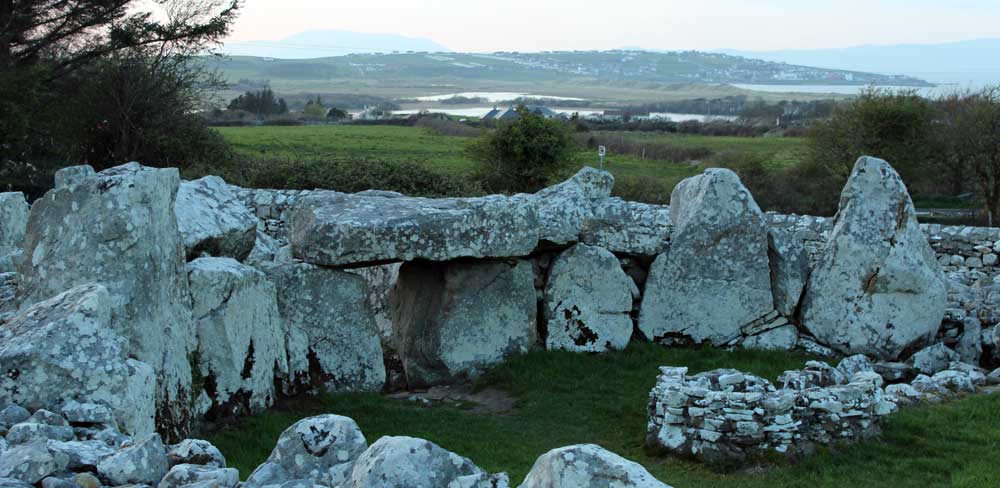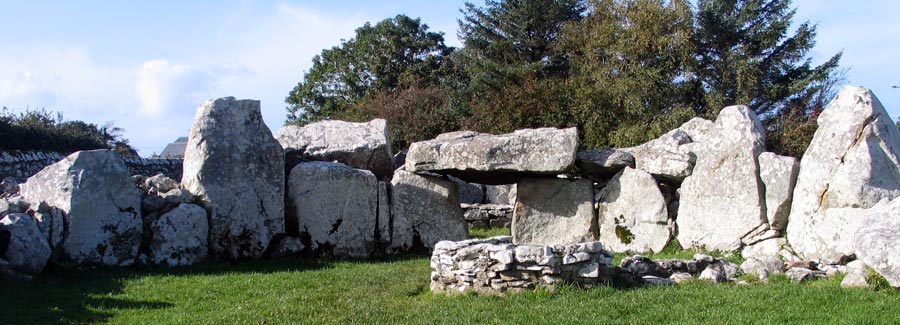The Folklore of Creevykeel.
by Hugh O'Neill Hencken.
According to Mr. Henry Morris, the Irish name of the site is Caiseal an Bhaoisgin. In 1935 the only Irish speaker that could be found in the district, Mr. Patrick Healy of Mullaghmore, called it Caislean Bhaoisgin, and so did Mr. Edward Connelly of Creevykeel, who, though he had forgotten his Irish, remembered the name of the cairn.
Mr. Healy also called the neighbouring well Tobar Baoisgin and the mountain behind it Beann Bhaoisgin. I am indebted to Dr. Joseph Raftery of the National Museum of Ireland for collecting the information on the Irish names.
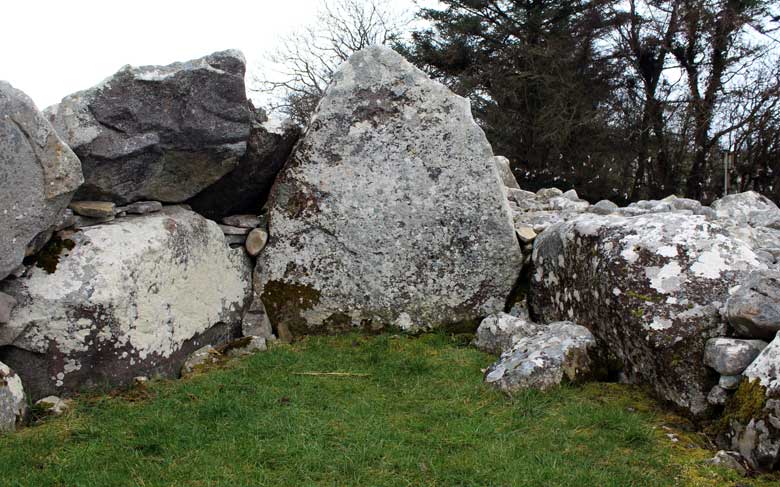
The writer also heard the following stories from Mr. Edward Connelly, who was then a man of about 80, and who lived near the cairn. He said that the replaced lintel had originally stood erect on one edge upon its supporting uprights instead of lying flat, and that under it on the northern side there was another smaller stone between it and the jamb stone of the entrance. This was perhaps the broken stone that was moved during the excavation.
Though the story that this stone over the entrance from the court into Chamber CI once stood erect like a pediment sounds very improbable, it is generally believed in the district, and it was also told by Mr. John Hannon of Creevykeel.
Mr. Connelly said that 'the prophecy of the stone,' which he had heard since he was a boy long before it fell, was that it would be thrown down 'by three brothers of the one name.' About thirty years ago three brothers upset the stone. It is incidentally worth mentioning that, had the stone ever stood erect, it could have been pushed over by three men, but certainly not if it lay flat as we replaced it.
About a century ago, according to Mr. Connelly, there were still-houses for making poteen concealed among the ruins of the cairn. One day fifty mounted men set out from Sligo to capture the poteen-makers and their still. But while they were on their way, a white hare appeared on a stone wall beside the cairn, and the owners of the still decided to follow it. It led them to within sight of the mounted men, and the poteen-makers, realizing their danger, rushed back to the cairn to save their still. Thereafter the white hare always appeared to them whenever the authorities attempted a capture, and due to these warnings the still was never seized. This hare, though sometimes chased by dogs, was never caught.
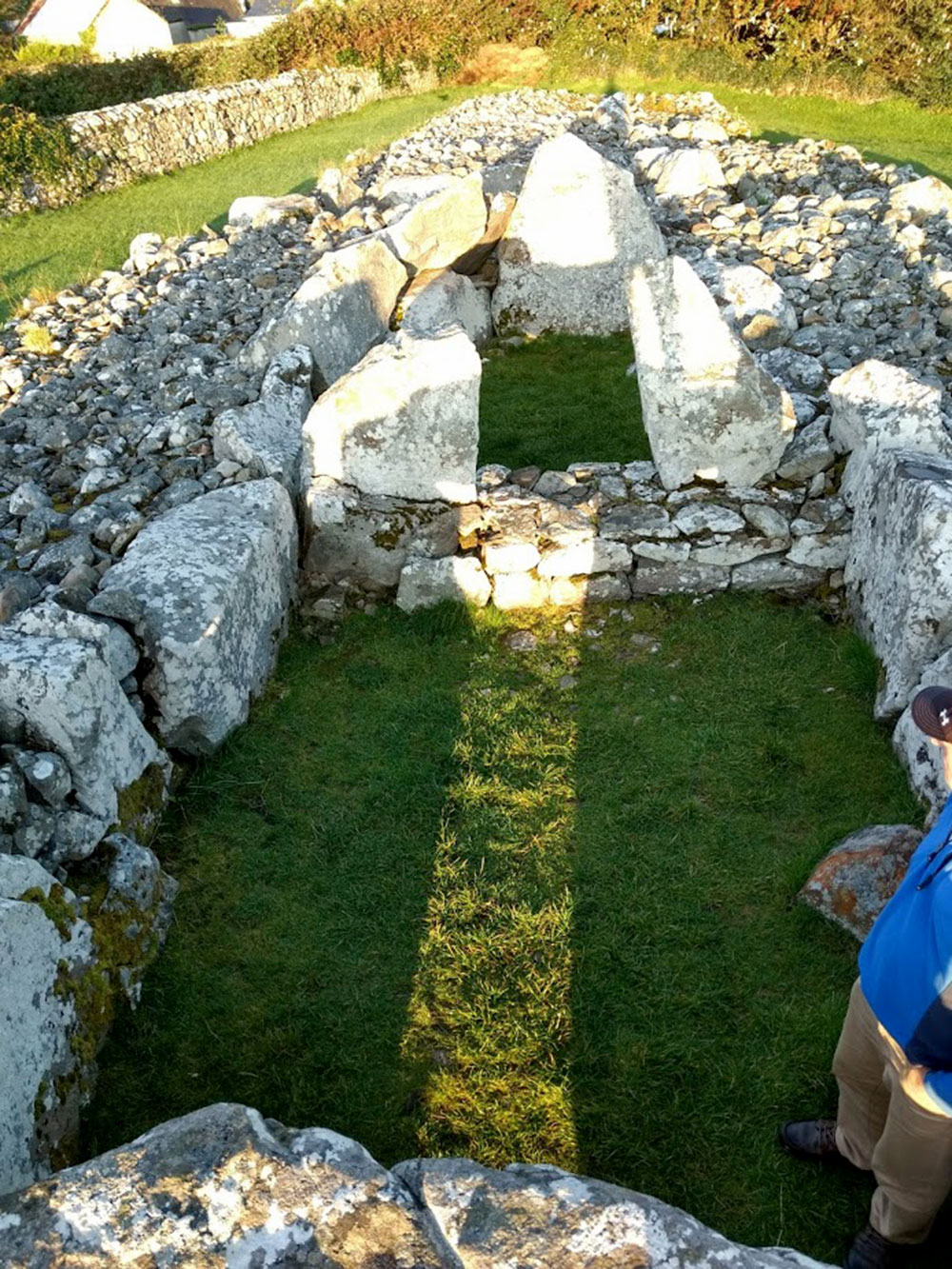
Photograph © Eamon Murphy.
Mr. Connelly also said that when he was about seventeen he cut a cane from a bush near the cairn and carried it one morning when he was driving some sheep to a fair. At the point where the road passes within a few yards of the cairn, his bootlace became untied, and he stooped down to tie it, laying the cane in the road as he did so. When he looked up again the cane was gone, and, though he searched for it for half an hour, he finally had to go to the fair without it.
The next morning about eleven o'clock he passed by the same way and saw his cane lying in the middle of the road exactly where he had left it. In spite of all the horses and carts that had gone to and from the fair by that road, there was not a single mark on the cane. After that he decided to cut no more bushes near the cairn.
About thirty years ago Mr. Connelly saw a hen pheasant on the cairn and went toward it to try to catch it but did not attempt very seriously to do so. When it was almost within his grasp, it flew away a short distance and then alighted. Again he nearly caught the bird, and again it eluded him. This happened several times until the pheasant disappeared into what Mr. Connelly called the 'pipe,' which appeared to be the passage connected with the Early Christian structure in the court. This ‘pipe’ Mr. Connelly assumed to be several hundred yards long.
These events, always with the same hen pheasant, repeated themselves for about ten years. Mr. Connelly said that he thought that he came to no harm because he had not really meant to harm the bird, but that it might have been otherwise had he seriously tried to catch it.
He asked what was going to be done with the stones which had been removed from the cairn, and he highly approved of their being replaced. He added that anyone who touched them meaning no harm would not be harmed, but if anyone touched them meaning harm, they might take some form of vengeance.
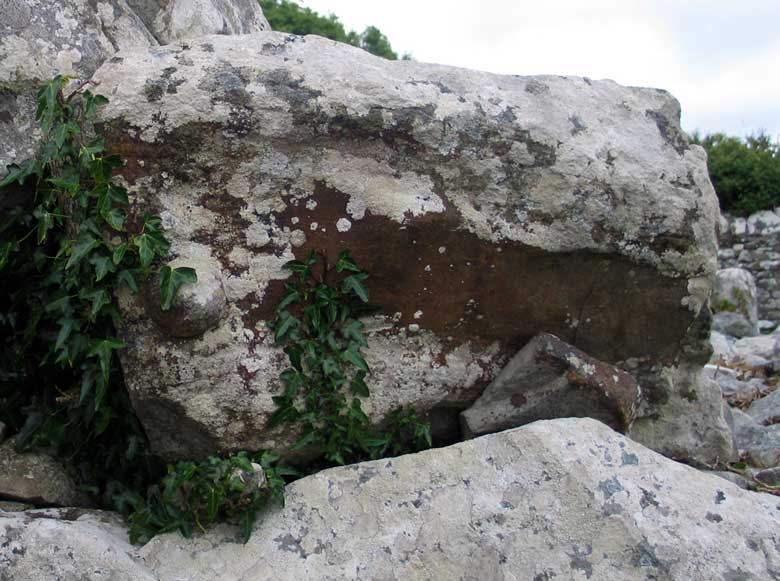
It was interesting to notice that all through Mr. Connelly's conversation about the site, he regarded it not as a grave but as a dwelling inhabited at the present time. In this regard it takes its place with forts, raths and ruins of all ages, which are the regular abode of 'the other people.'

